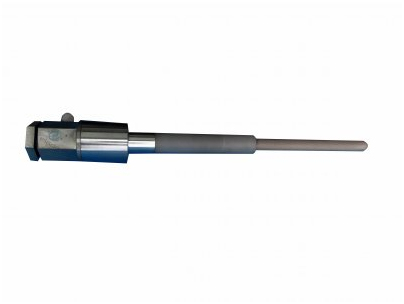PLATINIZED
TITANIUM ANODE
GENERAL

Titanium relies on the
formation of a strong adhering oxide film to give it corrosion resistance in
most electrolytes. Titanium itself will act as a conductor of current without
passing current into the electrolyte.
With the application of a thin
layer of platinum onto the titanium surface the current will pass along the
titanium and enter the electrolyte through the platinum surface with the
exposed surfaces of the titanium remaining inactive. The usual thickness of
platinum, which is electroplated onto the titanium is 5 microns. The platinized
area of the anode will operate at current densities of up to 100 amperes per
square ft. of surface area.
The electrical resistance of
titanium is high and where solid rods or plates are used it is essential to
design with adequate cross sections of titanium and with the shortest current
paths to the platinum surface, thus avoiding high volt drops.
Where long lengths of
platinized titanium are required to improve the electrical resistance, titanium
is formed over copper and the platinum skip-plated onto the titanium. This
provides the most economic installation with the best relationship between
current density and volt drop.
It is recommended that
rectifier 3 phase AC is used and the voltage between anode and electrolyte
should be less than 10 volts.
Platinized titanium anodes are
suitable for used in impressed current system for jetties, pipelines protected
by deep well groundbeds, power stations and water
storage
tanks.